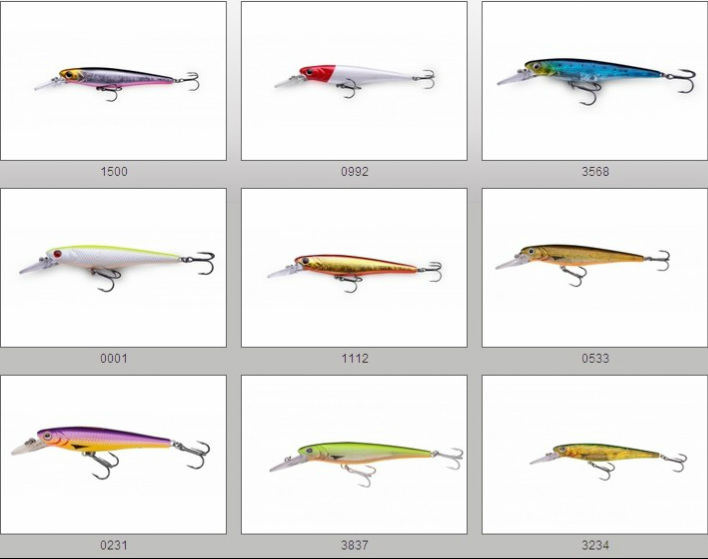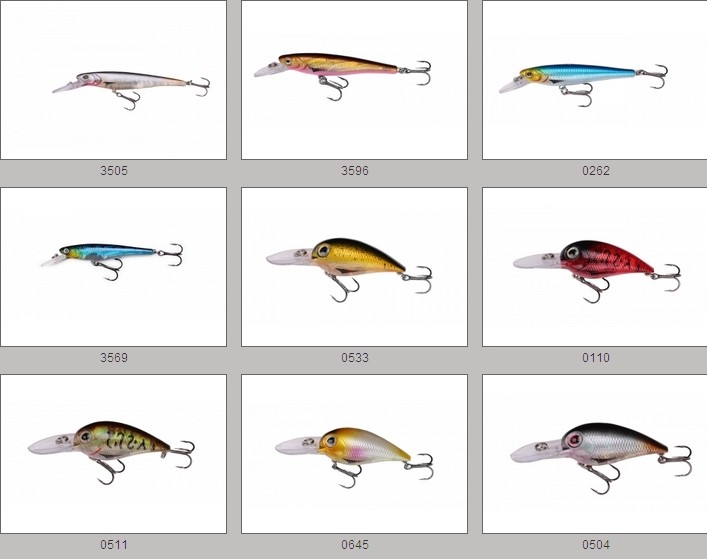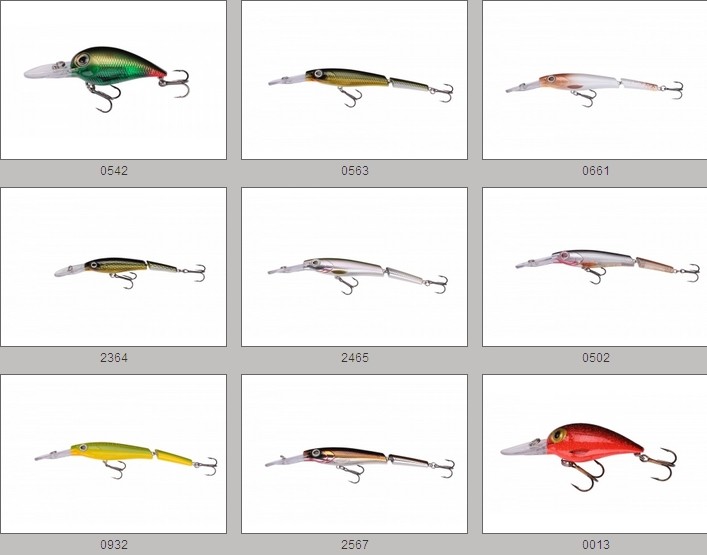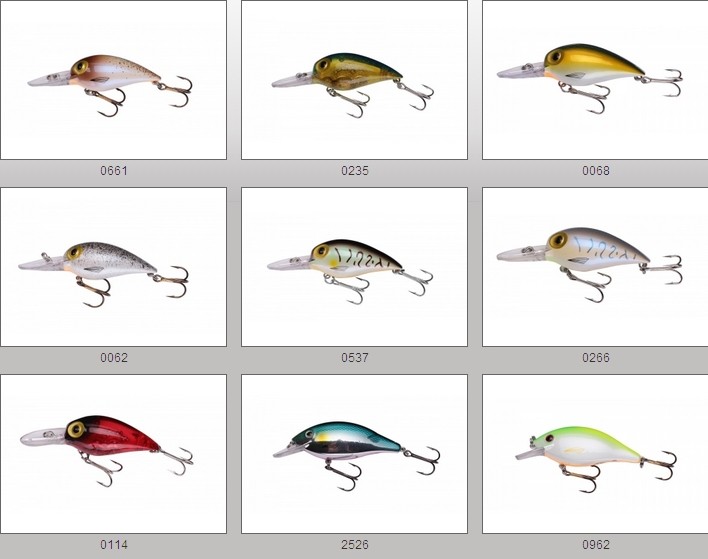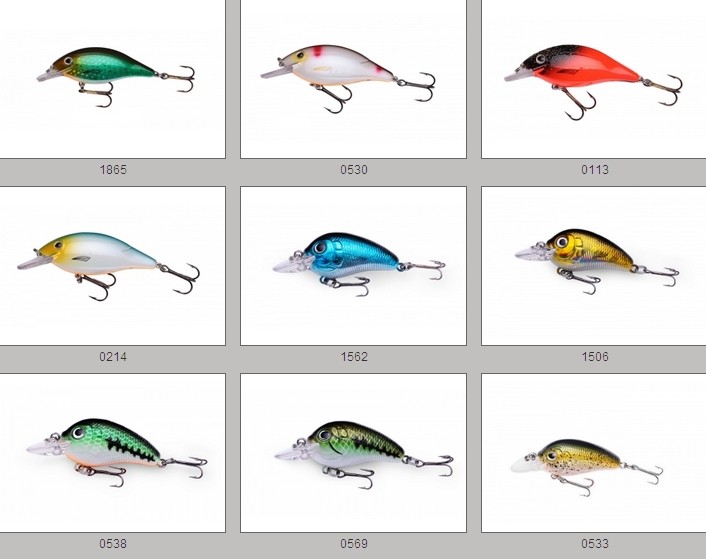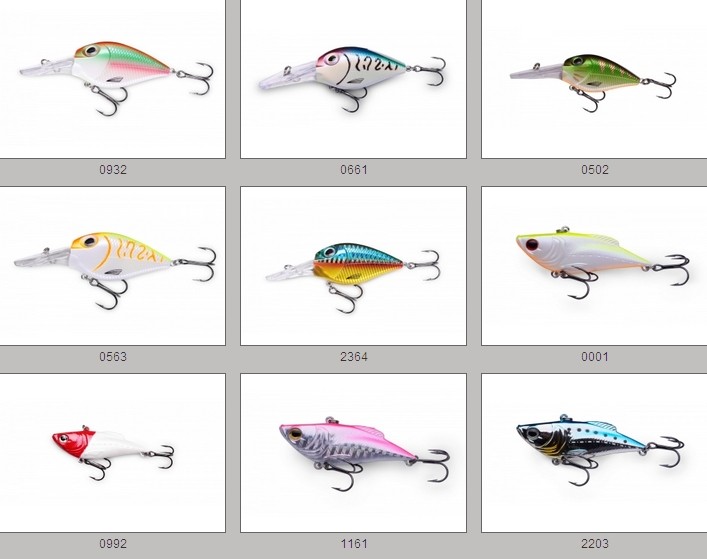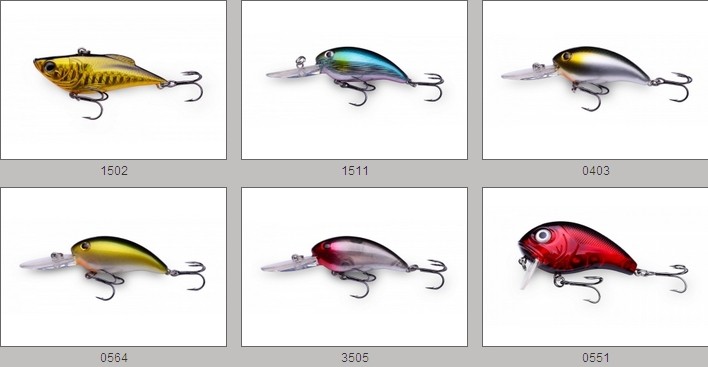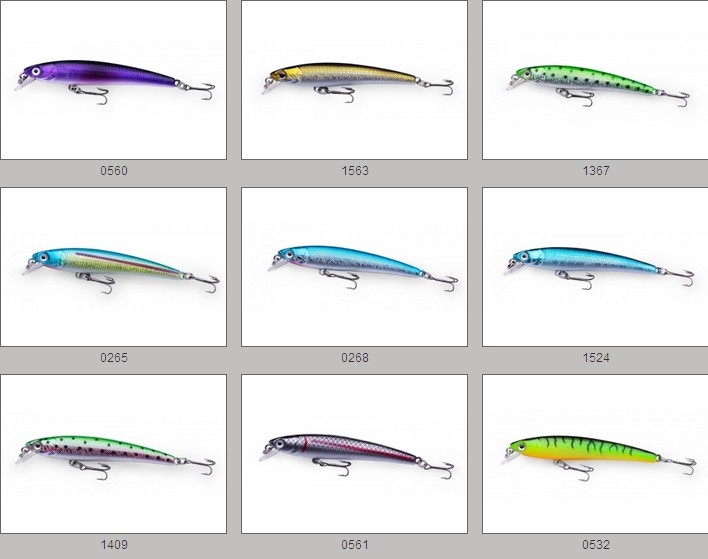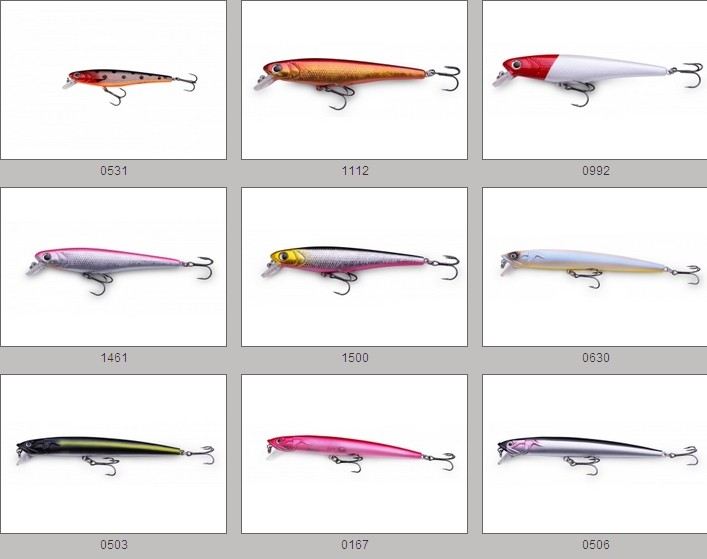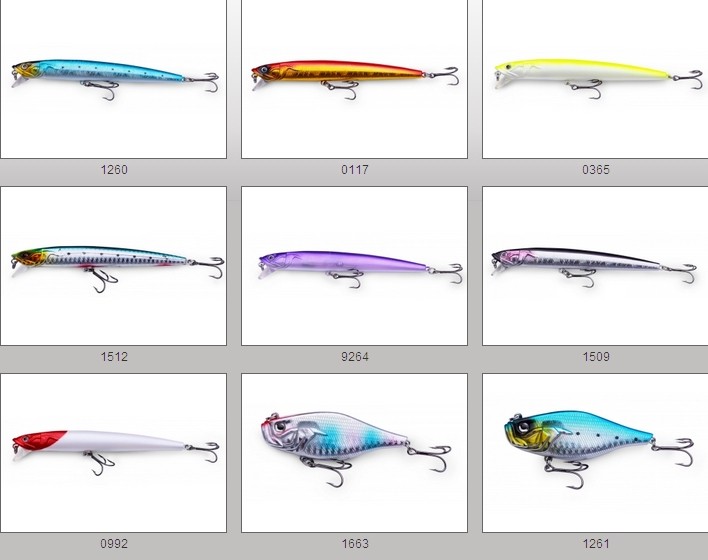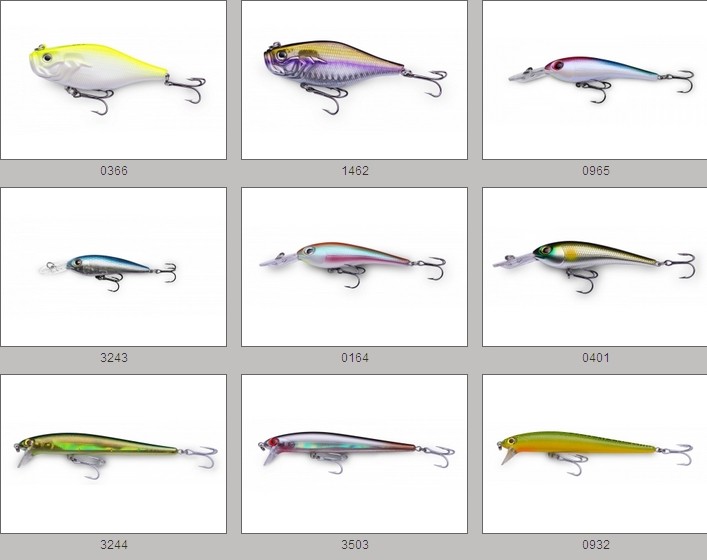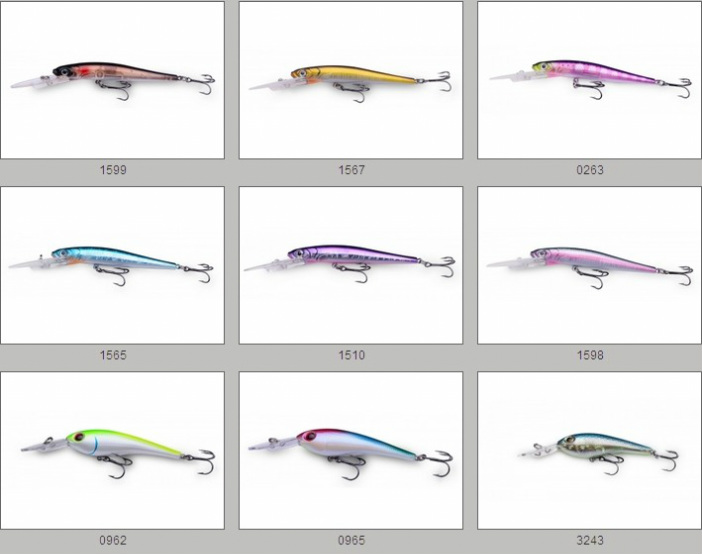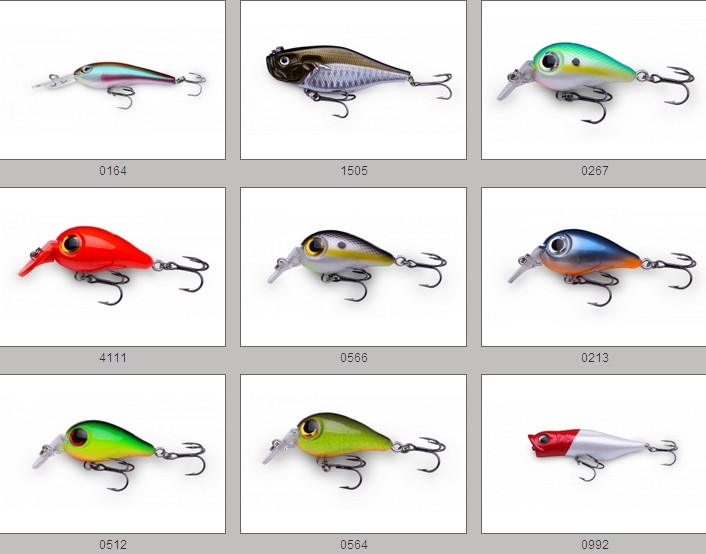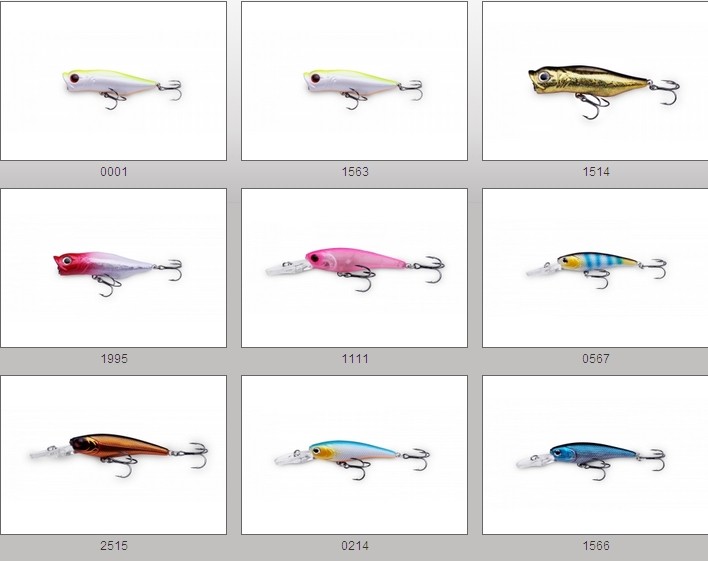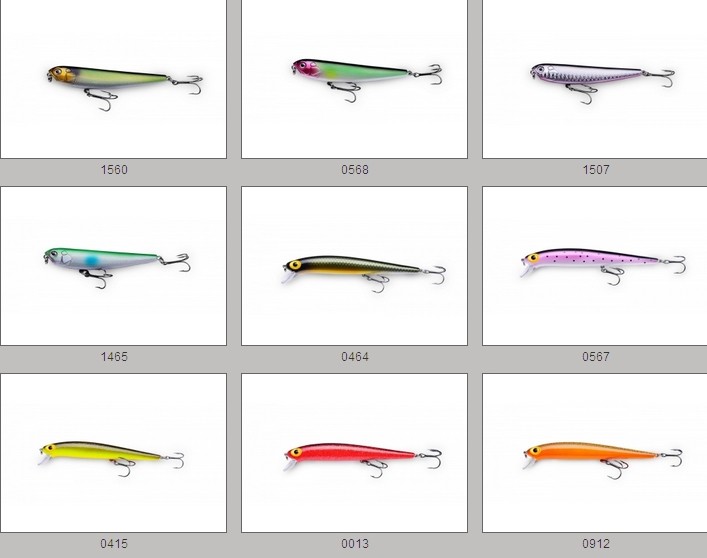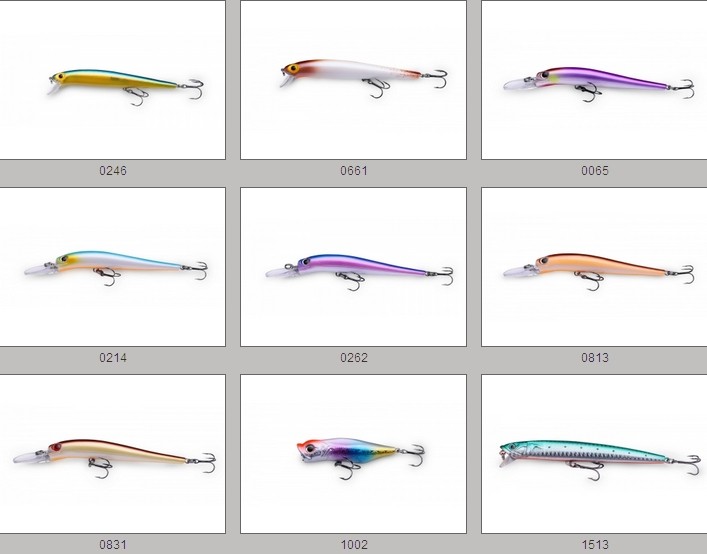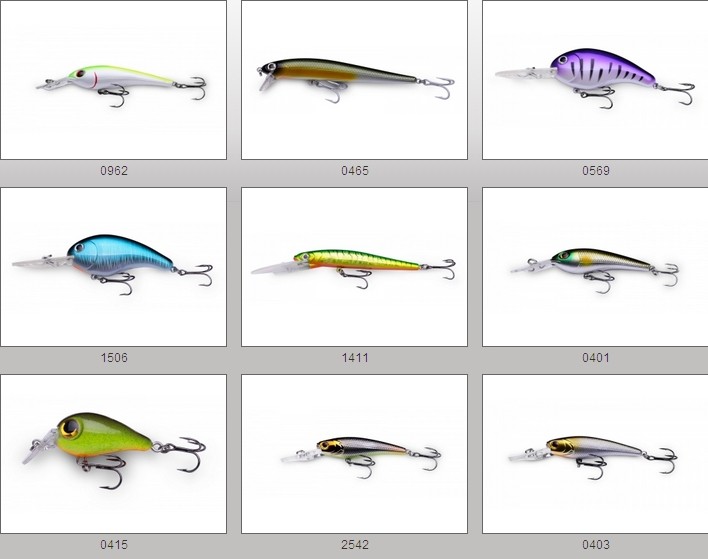There are many types of fishing lures. They are all manufactured in different ways to resemble prey for the fish in most cases, but are sometimes engineered to appeal to a fishes sense of territory, curiosity or aggression. Most lures are made to look like dying, injured, or fast moving fish. They include the following types:
One advantage of use of artificial lures is a reduction in use of bait. This contributes to resolving one of the marine environment's more pressing problems; the undermining of marine food webs by overharvesting "bait" species which tend to occur lower in the food chain.Another advantage of lures is that their use promotes improved survival of fish during catch and release fishing. This is because lures reduce the incidence of deep hooking which has been correlated to fish mortality in many studies.
- A jig is a weighted hook with a lead head opposite the sharp tip. They are often covered with a minnow or crawfish or even a plastic worm to get the fish's attention. The angler moves the rod to make the jig move. Deep water jigs used in saltwater fishing consist of a large metallic weight, which gives the impression of the body of the baitfish, which has a hook attached via a short length of kevlar usually to the top of the jig. These types of jigs can be fished in water depths down to 300 metres.
- Surface lures are also known as top water lures, poppers and stickbaits. They float and resemble prey that is on top of the water. They can make a popping sound from a concave-cut head, a burbling sound from "side fins" or scoops or a buzzing commotion from one or several propellers. A few have only whatever motion the fisherman applies through the rod itself, though if skillfully used, they can be very effective.
- Spoon lures are made to resemble the inside of a table spoon. They flash in the light while wobbling or darting due to their shape, and attract fish.
- Plugs are also known as crankbaits or minnows. These lures have a fishlike body shape and they are run through the water where they can make a variety of different movements caused by instability due to the bib at the front under the head.
- Artificial flies are designed to resemble all manner of fish prey and are used with a fly rod and reel in fly fishing.
- Soft plastic baits/lures is a general category of lures that are made of plastic or rubber, and are designed to resemble fish, crabs, squid, worms, lizards, frogs, leeches and other creatures.
- Spinnerbait are pieces of wire bent at about a 60 degree angle with a hook on the lower end and a flashy spinner mechanism on the upper end.
- Swimbait is a form of soft plastic bait/lure that resembles an actual baitfish. It can be retrieved like a plug/minnow lure. Some of these have a paddle-shaped tail that emulates a swimming motion when drawn through the water. The development in the finishes in these types of plastic lures have meant that the finishes achieved now look more like a baitfish than ever before.
- Fish decoy is a type of lure that traditionally was carved to resemble a fish, frog, small rodent, or an insect that lures in fish so they can be speared. They are often used through the ice by fishermen and also by the Inuit people as part of their diet. The Mitchell Museum of the American Indian collection includes Native American fish decoys. William Jesse Ramey is considered a vintage master carver of fish decoys whose work has been featured in museums.
One advantage of use of artificial lures is a reduction in use of bait. This contributes to resolving one of the marine environment's more pressing problems; the undermining of marine food webs by overharvesting "bait" species which tend to occur lower in the food chain.Another advantage of lures is that their use promotes improved survival of fish during catch and release fishing. This is because lures reduce the incidence of deep hooking which has been correlated to fish mortality in many studies.
Above are only part of our lures, for more please click here to check the lure catalog
Price:
FOB Price: Determined by the lure type and materials customer choose
Minimum Order Quantity: 2000pcs/model, 300pcs/color/model
Payment Terms: Bank wiring
For more, please click here to contact us.
FOB Price: Determined by the lure type and materials customer choose
Minimum Order Quantity: 2000pcs/model, 300pcs/color/model
Payment Terms: Bank wiring
For more, please click here to contact us.

